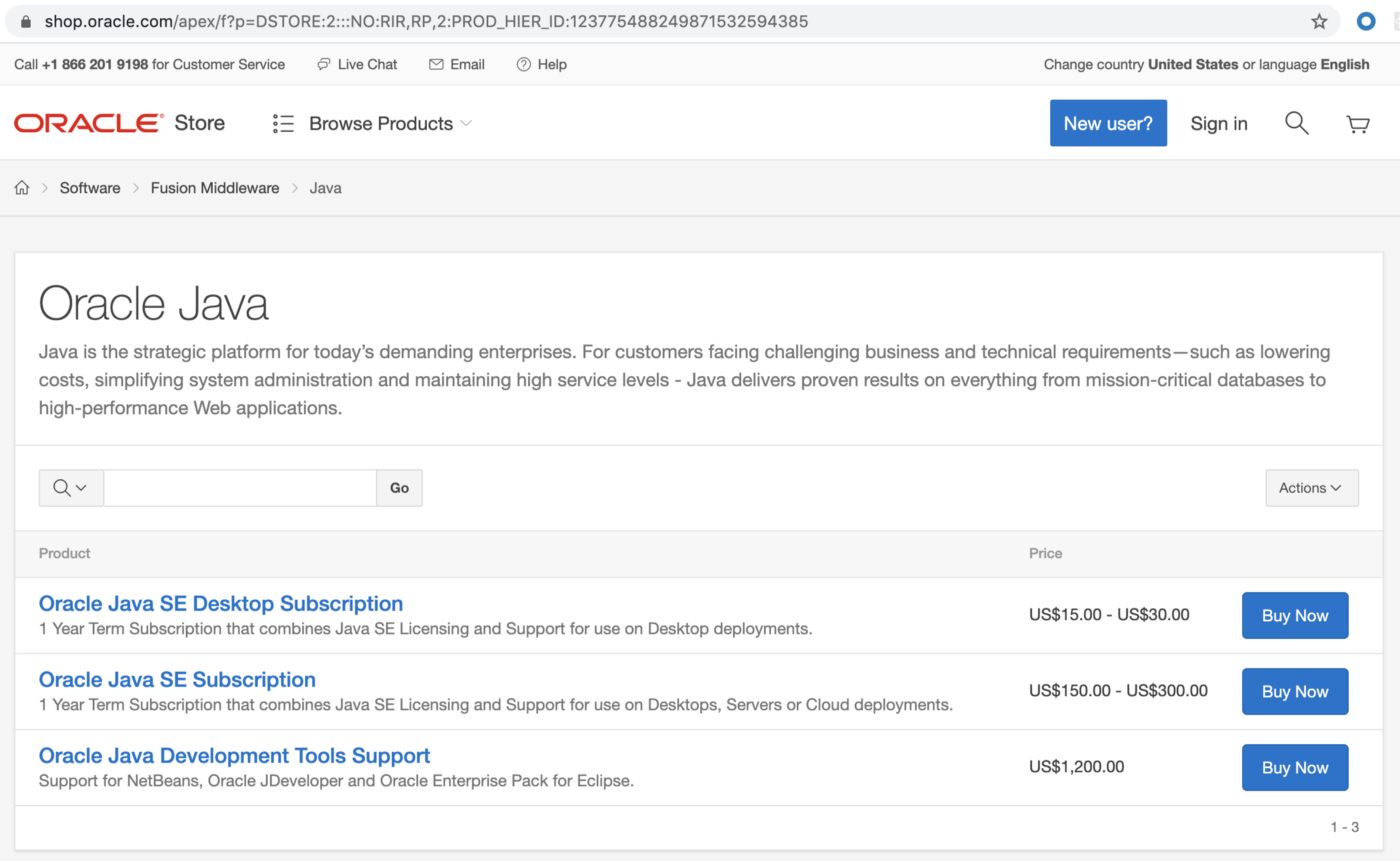How Much Does Java Cost?
Join the DZone community and get the full member experience.
Join For FreeThis article is based on pricing models and available data as of April 29, 2020.
Oracle changed the Java licensing model for the version after Java SE 8. This article details the available licenses and pricing model for enterprises to use Java.
Oracle Java SE 8 remain free. Java SE 11 is available for free under Open Source license. And current version Java SE 14 is available for free for personal, development use.
For Production use, organizations need to pay. Oracle calls it Java SE Subscription.
License Types
Below is Oracle's website for Java SE Subscription.

1.Oracle Java SE Desktop Subscription
(for individual users, licensed as Named User Plus). Pricing details.
USD $30 per-year for 1 user license.
2.Oracle Java SE Subscription (for servers)
This requires some calculation, as the pricing is based on the number of cores of the processors.
Calculation
Here’s the formula:
Number of required licenses = Total number of cores of the processor X Core processor licensing factor
Refer to the Oracle Processor Core Factor Table.
Examples:
- A multicore chip-based server with an Oracle Processor Core Factor of 0.25 installed and/or running the program on 6 cores would require 2 processor licenses (6 multiplied by a core processor licensing factor of .25 equals 1.50, which is then rounded up to the next whole number, which is 2). Cost: $300 x 2 licenses= $600 per-year.
- A multicore server for a hardware platform not specified in the Oracle Processor Core Factor Table installed and/or running the program on 10 cores would require 10 processor licenses (10 multiplied by a core processor licensing factor of 1.0 for ‘All other multicore chips’ equals 10). Cost: $300 x 10 licenses= $3,000 per-year.
- Say you have a total of 200 physical cores (in a cluster) and Java running on 150 physical cores — you will still need to license for 200. Now apply a core factor of .5 (based on Oracle Processor Core Factor Table.) and that’s how many licenses you need. So 200 x .5 = 100 are the total Java SE server subscriptions you need to purchase. Cost: $285 x 100licenses= $28,500 per-year.
What Is an SE Subscription?
Java SE Subscription offers customers licensing and support for Java SE for cloud deployments, server, and desktop use. Builds (jar files) are based on the free Java Platform, Standard Edition (Java SE), and support Java SE releases from Java SE 6 through the current release of Java SE 11.
Why Pay? What Do We Get?
- Oracle support +
- Oracle Java SE licensing and support for cloud deployments, server, and desktop
- Access to performance, stability, and security updates directly from Oracle
Access to several Oracle Java SE versions past end of public updates (EoPU) - Oracle Java SE 8 and 7 enterprise management, monitoring, and deployment features
- Around-the-clock My Oracle Support with support for 27 languages and fast-fix turnarounds
- Access to critical bug fixes before they get included in publicly available releases
- Monthly subscription pricing
- Direct access to updates from My Oracle Support (MOS)
Free Java Still Exists. Options!
- Oracle Open JDK builds https://jdk.java.net/
- AdoptOpenJDK https://adoptopenjdk.net/
- Amazon Corretto https://aws.amazon.com/corretto/
- Azul Zulu https://www.azul.com/downloads/zulu/ (Microsoft Azure uses Zulu for it Java support)
References
- Oracle Java SE Subscriptions https://www.oracle.com/java/java-se-subscription.html
- Java SE Subscription FAQs https://www.oracle.com/technetwork/java/javaseproducts/overview/javasesubscriptionfaq-4891443.html
- Price list https://www.oracle.com/assets/java-se-subscription-pricelist-5028356.pdf
- Oracle Processor Core Factor Table.
Published at DZone with permission of Suren Konathala. See the original article here.
Opinions expressed by DZone contributors are their own.

Comments